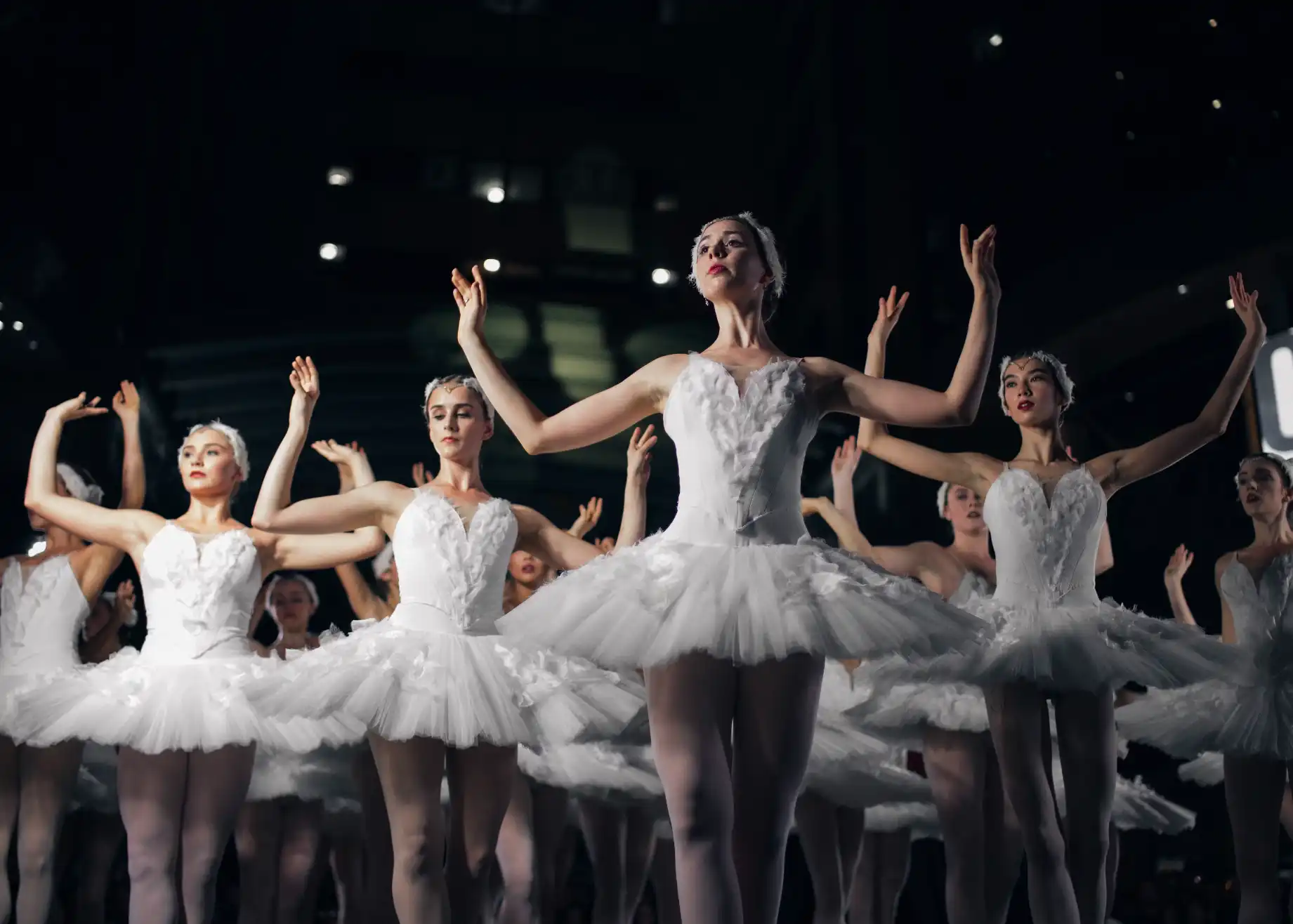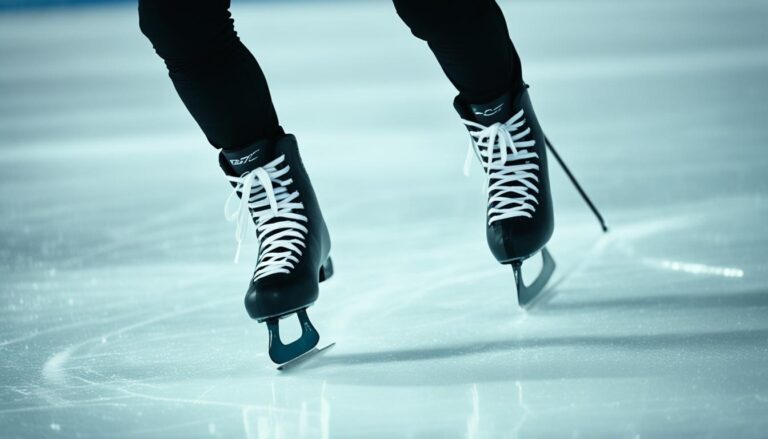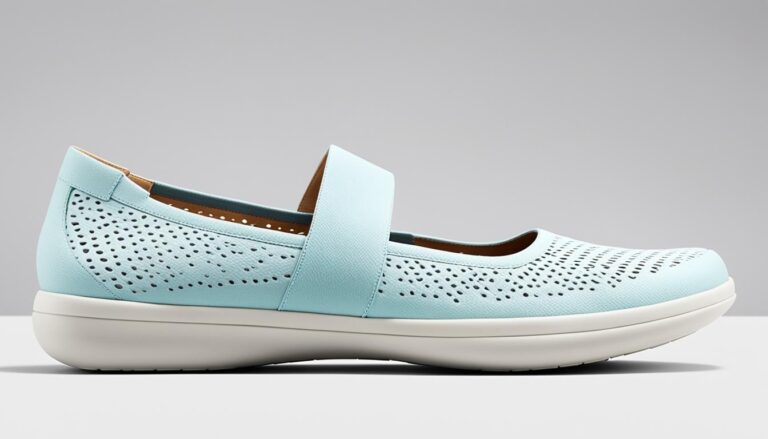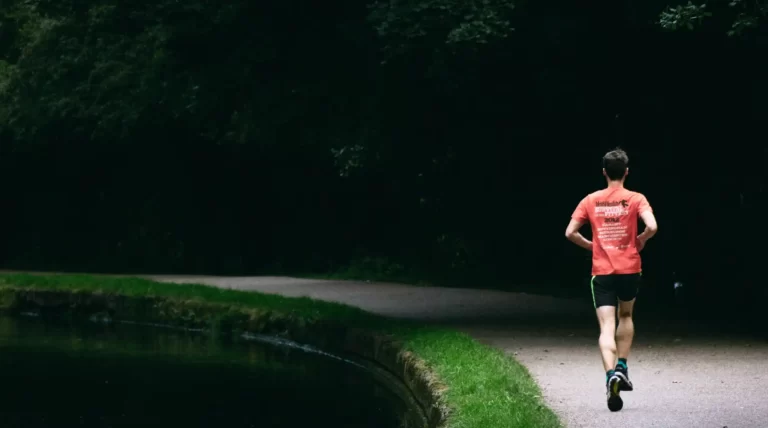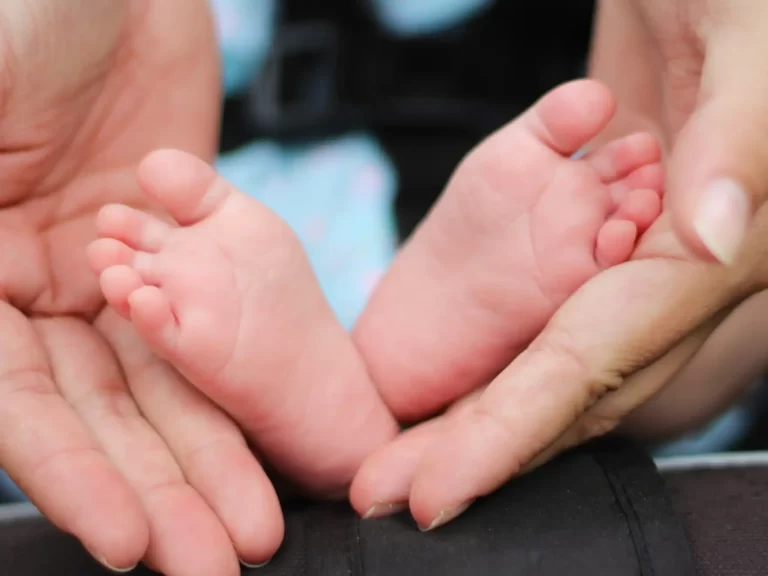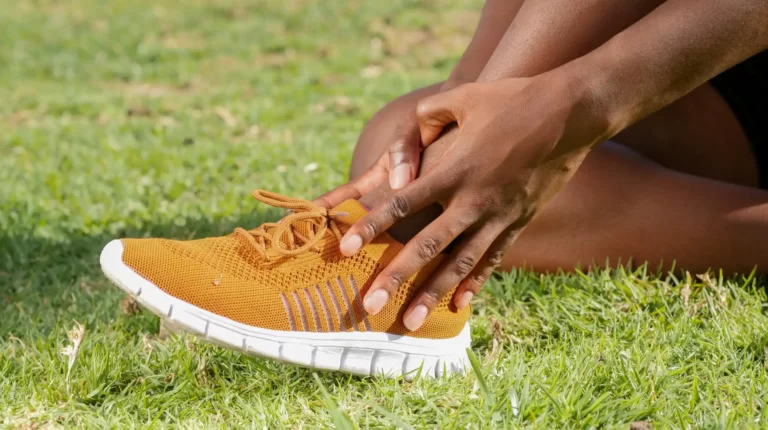Ballet Dancers with Flat Feet: Tips & Solutions
Did you know an amazing 90% of ballet dancers have flat feet? This big number shows the unique problems they face. Despite these issues, there are tips and solutions to improve performance and avoid injuries.
We’ll look into foot anatomy, why dancers get flat feet, and how this affects them. We’ll also cover how to get help, change your dance style, and feel okay with your feet. This guide will help ballet dancers with flat feet feel more confident.
Key Takeaways
- Ballet dancers with flat feet face unique challenges, but there are solutions to help them excel.
- Understanding the anatomy and causes of flat feet is crucial for addressing the issues.
- Seeking professional help from podiatrists and dance medicine experts can provide valuable guidance.
- Proper footwear, support solutions, and targeted exercises can improve performance and prevent injuries.
- Embracing your foot shape and working with inclusive dance instructors can help you thrive.
Understanding Flat Feet in Ballet Dancers
To understand flat feet in ballet dancers, let’s look at the foot’s arches. The foot has three arches: the medial longitudinal, the lateral longitudinal, and the anterior transverse. These arches help with balance, support, and moving well when dancing.
Anatomy of the Foot: Arches and Flat Feet
Your foot’s arches are like shock absorbers, helping your foot move without pain. But for some with flat feet, these arches are too low or not there. This can cause problems for ballet dancers. Their performance and health can suffer because of it.
Common Causes of Flat Feet in Dancers
Flat feet in ballet dancers might come from family history, how their feet are shaped, or past injuries. The hard work of ballet training, especially dancing ‘en pointe,’ can wear the arches down. This might cause them to fall. Certain dance moves that need a lot of stretch and balance can also lead to flat feet.
Impact on Pointe Work and Technique
Dancers with flat feet find it hard to stand correctly on their toes or perform moves exactly. Their balance and strength might not be as good. This can cause more injuries and make their dances less impressive. It’s a big challenge for them.
Ballet Dancers with Flat Feet
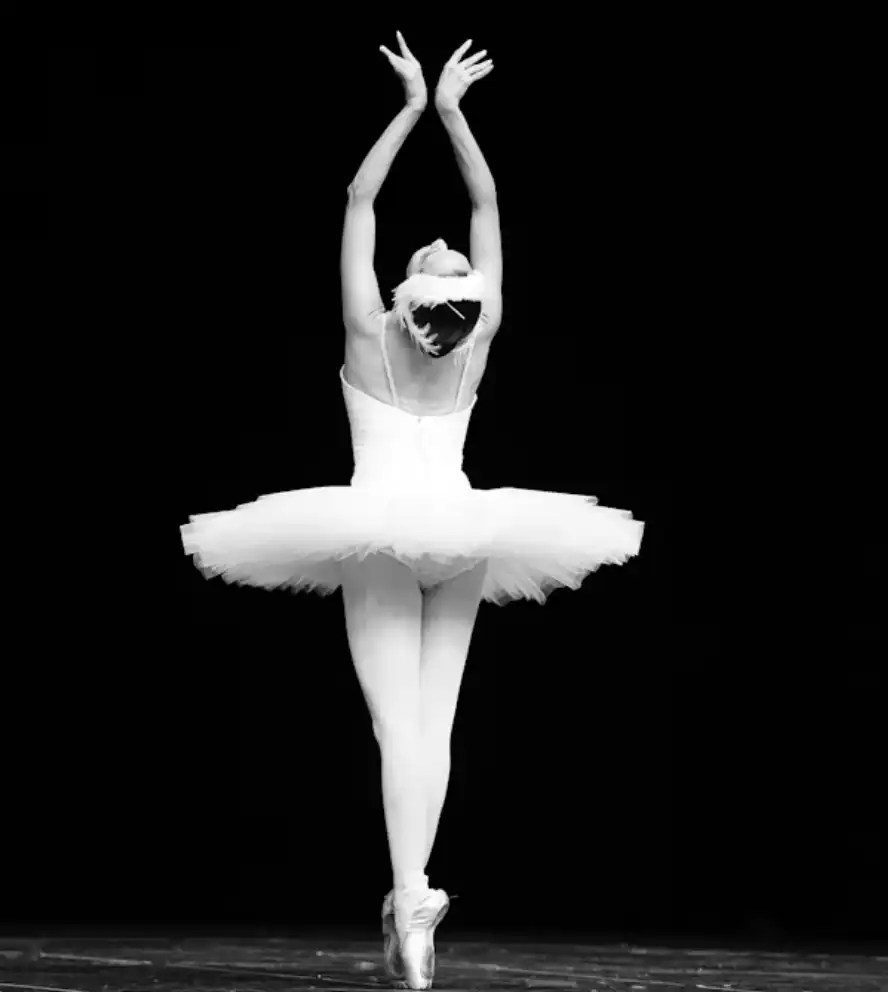
Ballet dancers with flat feet are a common sight in the dance world. This foot condition affects dancers at all levels. But dancers with flat feet can still do great with the right help and attitude. They can conquer challenges and reach their top.
Learning to adapt is key for ballet dancers with flat feet. They figure out what works best for them based on their unique foot shape. Knowing their needs and how their feet move helps them stay stable and flexible while dancing.
Some ballet dancers use special shoes or inserts to support their arches. Others focus on exercises to make their foot muscles stronger. This can improve how their feet work and help them dance better.
Sometimes, they also need to change how they do certain moves. For example, they might adjust how they dance on pointe or find new steps that fit their feet better. They work with their teachers and health experts to make a plan that fits their special needs.
Ballet dancers with flat feet show how the body can adapt and succeed. With a can-do attitude, support, and smart plans, they can do more than just cope with their condition. They make a mark in ballet, showing everyone that challenges can be overcome.
Potential Injuries and Issues
Ballet dancers with flat feet face many possible injuries and issues while dancing. These come from their foot structure. Knowing about these problems is key to preventing and dealing with them well.
Ankle and Joint Problems
Flat-footed ballet dancers have a higher risk of hurting their ankles and joints. Without a proper arch, their bodies deal with more pressure. This can cause ankle sprains, tendinitis, or even arthritis. Such problems hurt a dancer’s abilities and lower their precision and control.
Muscle Imbalances and Overcompensation
Having flat feet can lead to muscle imbalances. Some muscles work too hard to keep the dancer steady. This stress can tire these muscles, cause pain, and make injuries more likely. To avoid these issues, dancers must do specific exercises and work on their technique.
It’s important for dancers to know the risks of their flat feet. This helps them stay healthy and able to dance. They can do this by getting advice from experts and focusing on preventing injuries. With the right approach, they can do what they love effectively.
Seeking Professional Help
If you’re a ballet dancer with flat feet, getting help from experts is key. Podiatrists and foot specialists can offer important advice and steps to take. They check our feet’s mechanics, find any issues, and suggest things like custom insoles.
Podiatrists and Foot Specialists
Healthcare providers like podiatrists know a lot about feet. They diagnose and treat conditions, including flat feet in ballet. They look closely at our foot structure, spot concerns, and come up with plans just for us.
Physical Therapists and Dance Medicine
Physical therapists and dance medicine pros are also vital for ballet dancers with flat feet. They tailor programs to make us stronger and more flexible. This helps our feet and ankles work better for dancing.
Footwear and Support Solutions
Ballet dancers with flat feet need the right shoes to dance well and stay safe. They benefit from arch supports and custom orthotics. These give their feet the cushion and support they need. It helps reduce joint and muscle strain.
Arch Supports and Orthotics
Specialized inserts are made to fit the dancer’s feet and unique needs. They provide custom support and alignment. With arch supports and orthotics, ballet dancers with flat feet get better stability and control. This makes training and performing more comfortable.
Specialized Ballet Flats and Shoes
Ballet flats and shoes are available for flat-footed dancers. They come with extra cushioning, arch support, and stability. These features are essential for flat-footed dancers.
Choosing the best shoes and support helps flat-footed ballet dancers a lot. It allows them to dance better, avoid injuries, and improve their overall health.
Exercises and Stretches
Doing specific exercises and stretches is great for ballet dancers with flat feet. It’s key to make sure the foot and ankle muscles are strong. These muscles really help keep the arches steady.
The exercises that focus on the smaller foot muscles are best. For example, toe curls and dome raises can make a big difference. They boost the arch support by making the foot muscles stronger.
Strengthening Foot and Ankle Muscles
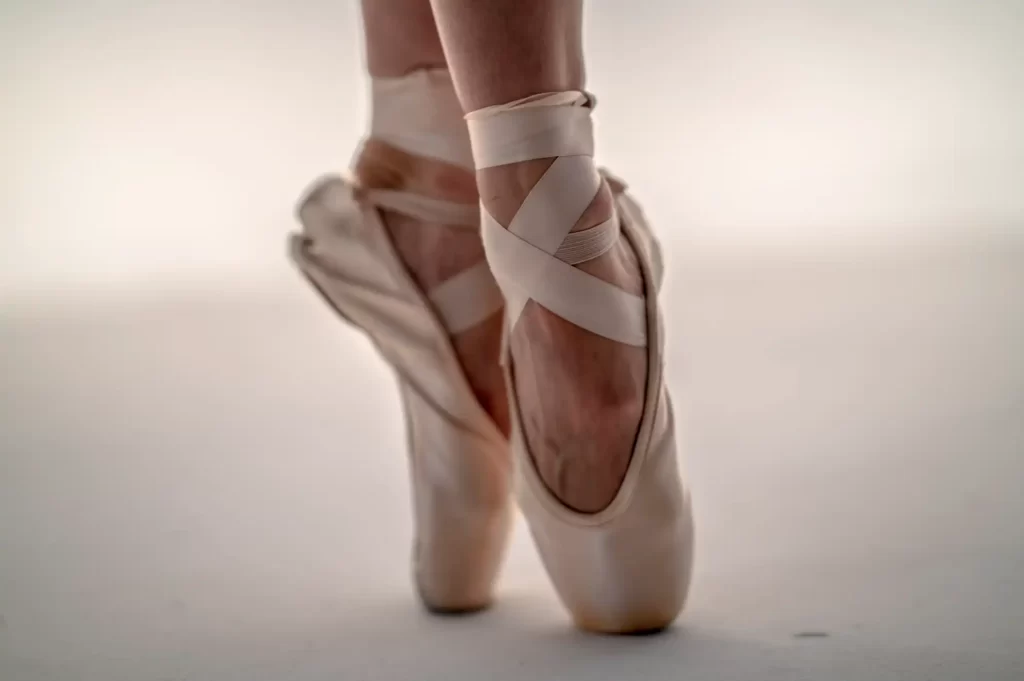
To get your foot and ankle muscles stronger, try these exercises:
| Exercise | Description | Benefits |
|---|---|---|
| Toe Curls | Curl the toes inward, hold for a few seconds, then release. Repeat several times. | Strengthens the intrinsic foot muscles, improving arch support and stability. |
| Dome Raises | Lift the arches of the feet, creating a “dome” shape, then lower back down. Repeat several times. | Targets the small muscles responsible for supporting the arches, enhancing foot control and flexibility. |
| Ankle Circles | Rotate the ankles in both clockwise and counter-clockwise directions, focusing on full range of motion. | Improves ankle mobility and strengthens the surrounding muscles, essential for dancers with flat feet. |
Improving Flexibility and Control
Adding stretches can also enhance a dancer’s control and flexibility. Here are some top stretches:
- Achilles tendon stretches: Stand with your feet hip-width apart, bend one knee and keep the other leg straight. Lean forward, feeling the stretch in the back of the calf and Achilles tendon.
- Plantar fascia stretches: Roll a golf ball or tennis ball under the foot, applying gentle pressure to the sole and releasing tension in the plantar fascia.
- Towel scrunches: Place a towel on the floor and use your toes to gather and scrunch the fabric, then release. Repeat several times to improve foot flexibility and control.
These exercises and stretches make big improvements for dancers with flat feet. They strengthen muscles and boost flexibility and control.
Modifying Dance Techniques
Ballet dancers with flat feet face unique challenges. They must adapt their movements to stay on top of their game. These changes include adjusting pointe work and trying new exercises. By making these tweaks, dancers with flat feet can improve and manage their condition.
Adjustments for Pointe Work
Dancers on pointe need to adjust movements for flat feet. They should try various pointe shoes for better support. Adding exercises to strengthen feet and ankles can also help.
Alternative Exercises and Movements
Adding new exercises benefits ballet dancers with flat feet. This could involve toe curls or tailored ballet moves. Such exercises enhance foot muscles and can lead to better arch support.
| Dance Technique Modifications | Benefits for Ballet Dancers with Flat Feet |
|---|---|
| Exploring alternative pointe shoe options | Provides additional support and cushioning, improving stability and control during pointe work |
| Incorporating strengthening exercises for the feet and ankles | Builds the necessary muscle strength and control to better handle the demands of pointe work and other dance movements |
| Modifying common ballet movements | Helps maintain proper alignment and control, reducing strain on the feet and joints |
| Exploring alternative exercises targeting the intrinsic foot muscles | Strengthens the small muscles in the feet, improving arch support and overall foot function |
Embracing Your Foot Shape
Being a ballet dancer with flat feet is special. It’s important to love our unique foot shape and the different feet you see in the dance world. This journey to accept flat feet is key for our health and how well we dance. Knowing there are many kinds of feet in dance helps to change any wrong ideas. We show others how to be proud of their differences.
Accepting and Adapting to Flat Feet
It can be tough to accept our flat feet, especially for dancers like us. We need to admit the challenges, like how it affects our dancing, and find answers. Getting help from pros and looking for support is vital. This way, we can adjust our dance practice and love our feet. This improves how we dance and lowers the chance of getting hurt.
Celebrating Diversity in Dance
The idea of a perfect foot in dance has been too limited for too long. But, we are changing that view. By celebrating the different foot shapes, especially in ballet, we make the dance world more welcoming. Our flat feet show how amazing our bodies are at adapting. We should be happy about what makes us special. Let’s work together to make dance a place for every kind of body and feet. This will make new dancers feel good and welcome.
Working with Dance Teachers
If you’re a ballet dancer with flat feet, working closely with dance teachers is very important. It’s all about talking openly. We share what we need and what helps our feet the most.
Communicating Your Needs
It’s vital to talk to your dance teacher if you have flat feet. This sharing lets them know our challenges. They can then help us better and tweak their teaching to fit our needs.
Tell your teacher what you struggle with and what helps. Together, you can make a plan that’s just right for you. This kind of teamwork makes sure you’re supported in your dance goals.
Finding Supportive and Inclusive Instructors
Look for teachers who know how to support flat-footed dancers. These teachers get our challenges. They change their teaching to help us shine.
Choose teachers who want to understand and meet your needs. They create a space where everyone, including us with flat feet, can do well.
| Characteristics of Supportive Dance Teachers | Characteristics of Unsupportive Dance Teachers |
|---|---|
| Knowledgeable about flat feet in dancers Willing to adapt techniques and exercises Prioritize individual student needs Offer inclusive and encouraging environment | Lack of understanding about flat feet Rigid teaching methods with no modifications Discouraging or dismissive of flat-footed dancers Create a non-inclusive or unsupportive environment |
Choosing inclusive teachers strengthens our dance journey. They help us be the best dancers we can be, even with flat feet.
Preventative Measures
Ballet dancers with flat feet work hard to stay healthy and avoid injuries. They do this by warming up and cooling down properly. They also do activities like Pilates and yoga to keep their bodies strong and flexible.
Proper Warm-up and Cool-down
For ballet dancers with flat feet, a good warm-up and cool-down are key. The warm-up gets our bodies ready for hard work, preventing injury. The cool-down helps our bodies relax and heal after dancing, increasing flexibility and reducing soreness.
Cross-training and Injury Prevention
Adding different exercises to our routine can make us stronger and safer. Things like Pilates, yoga, and weightlifting can help a lot. They make our feet and body muscles stronger, improve balance, and make sure our joints are stable. This way, we can improve our dancing skills, reduce the chance of injury, and stay healthy.
Conclusion
Looking back, we’ve seen how ballet dancers with flat feet face distinct hurdles. But it’s crucial to know that they can still do very well. Knowing about foot structure, dealing with possible problems, and getting professional advice are key.
As we’ve discussed, it’s essential to love your foot shape. The dance world is all about different types of people. By staying positive and taking precautions, these dancers can stay healthy. They can also lower their chance of getting hurt.
Finally, we urge ballet dancers with flat feet to keep at it. With hard work, a strong will, and the tips in this article, you can beat these challenges. Your special foot shape is what sets you apart as a dancer. And the dance field is better because of you.
FAQ
What is the anatomy of the foot and how do flat feet affect it?
The foot is made up of three arches that keep it strong and stable. If you have flat feet, it means these arches aren’t working right. This can make it hard for your foot to do its job well.
What are the common causes of flat feet in ballet dancers?
There are many reasons why ballet dancers might have flat feet. It could be because of family history, how their feet grew, or injuries. Knowing what causes flat feet helps in finding ways to deal with them.
How do flat feet impact pointe work and technique in ballet?
Ballet dancers with flat feet might find it harder to stand on their toes or keep their movements precise. This is because their feet don’t have the right support. It’s tough to get the right balance and control without support under the foot’s arches.
What are the potential injuries and issues that ballet dancers with flat feet may face?
Having flat feet can lead to injuries like twisted ankles or swollen tendons. It may even cause joint problems like arthritis. These foot issues can also mean certain muscles in the legs have to work too hard.
How can ballet dancers with flat feet seek professional help?
Seeing a foot specialist can help ballet dancers understand their foot problems better. These experts can check the feet’s shape and how they work. Then, they can suggest special shoe inserts or shoes to help.
What are some footwear and support solutions for ballet dancers with flat feet?
The right shoes or inserts can make a big difference for ballet dancers with flat feet. They help support the arches and lessen foot pain. Specific shoes for flat feet can also improve a dancer’s comfort and performance.
What exercises and stretches can help ballet dancers with flat feet?
Exercises can strengthen the weak foot muscles of ballet dancers with flat feet. This can make their feet more stable and supportive. Toe curls and dome raises are good for building up these muscles.
How can ballet dancers with flat feet modify their dance techniques?
Ballet dancers with flat feet may need to change how they dance to protect their feet. They can try different shoes or add support to their pointe work. Finding moves that don’t strain their feet is important.
How can ballet dancers with flat feet embrace their foot shape?
Ballet dancers should learn to love their flat feet and see it as part of what makes them unique. It’s a journey to accept and deal with it, but it’s important for their joy and success in dancing.
How can ballet dancers with flat feet work effectively with their dance teachers?
Dancers with flat feet need to talk openly with their teachers about their feet. Good teachers will understand and support them. Working together makes it easier for the dancer to enjoy and do well in dance.
What preventative measures can ballet dancers with flat feet take?
To avoid foot problems, ballet dancers with flat feet should do proper warm-ups and cool-downs. They can also do different types of exercise to keep their feet and legs strong. This helps them stay healthy for dancing.

